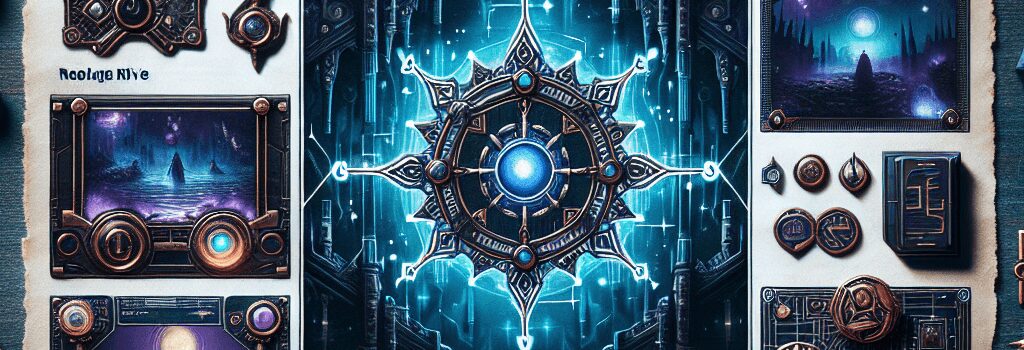Elden Ring: Nightreign – RPG Tech Deep Dive

Introduction
Elden Ring: Nightreign condenses FromSoftware’s sprawling fantasy epic into rapid, semi-randomized multiplayer bouts that rarely top an hour. Released on May 29, 2025, for Windows, PS5, and Xbox Series X/S, this $40 spin-off slashes downtime and amplifies action with accelerated traversal, tighter encounters, and cooperative tactics. In this deep dive, we expand on the technical underpinnings, server architecture, expert insights, and roadmap for future updates.
Core Gameplay Loop
The game drops teams of three onto a single 4 km² map, divided into four biome zones: Ruined Plains, Frost-bitten Tower, Ashen Caves, and the Scarlet Marsh. Each run unfolds over two in-game days:
- Day 1: Farm fodder enemies for XP and search highlighted nodes for randomized loot drops (weapon tiers I–III).
- Day 2: Confront two mini-bosses—one per day—followed by a choice of a single Nightlord finale from among four high-difficulty bosses with distinct AI patterns.
Traversal and Engine Tweaks
To suit sub-hour sessions, Nightreign implements several engine-level modifications on top of the proprietary FromEngine:
- Unlimited Surge Sprint: Consumes a regenerating stamina pool at 15 HP/s for sustained bursts up to 8 m/s.
- Springy Wall Jump: Enables vertical repositioning—wall friction lowered by 40%, jump impulse increased by 25%—to reach ledges up to 3 m high.
- No Fall Damage: Gravity recalibrated (–20% terminal velocity), allowing safe descents into lower caverns.
- Jump Pads & Zip Lines: Scripted physics actors boost players 10–15 m, smoothing traversal across biomes.
Combat and Progression
Combat retains the hallmark stamina management of Souls-borne mechanics: timed dodges, block frames, and heavy telegraphed attacks. Class-specific skills recharge on a 60-second cooldown, while “Ultimate Arts” charge over a full run. XP gain per kill is capped at 2000 points, accelerating level-ups—players can reach level 30 within 30 minutes of optimal farming.
Network Performance and Server Infrastructure
Nightreign uses a hybrid cloud architecture hosted on AWS Gamelift, with regional clusters in US-East, EU-West, and Asia-Pacific zones. Each instance runs up to 60 simultaneous matches, leveraging:
- Tick Rate: 60 Hz server tick rate for hit-detection and zone contraction.
- UDP Multicast: Delta compression reduces bandwidth to ~25 Kbps per client.
- Latency Compensation: Client‐side prediction with ±100 ms rollback window mitigates lag spikes.
“We prioritized sub-100 ms round-trip time and automated scaling to handle launch-day peaks,” says Lead Network Engineer Maria Vasquez.
Technical Deep Dive: Engine Optimizations
While Elden Ring proper relied on dense world streaming, Nightreign preloads all map assets at match start, trading a 25 MB initial disk load for consistent 45 FPS on consoles and 60 FPS on PC (1080p). Key optimizations include:
- GPU Instancing: Repeated mesh sets (e.g., rubble, trees) rendered with a single draw call.
- LOD Scaling: Four tiers of Level of Detail adjust at 30 m, 60 m, and 120 m distances.
- Asynchronous Resource Loading: Noncritical effects (dust, embers) loaded in the background to maintain frame stability during boss AI phases.
Class Balance and AI-Driven Multiplayer Balancing
Nightreign’s class roster of eight archetypes (Tank, Duelist, Spellweaver, etc.) is balanced through a continuous telemetry feedback loop:
- Win/Loss Ratios per class analyzed hourly.
- Adaptive Damage Modifiers: Minor ±5% buffs or nerfs pushed live without client updates.
- Machine Learning Model: Predicts unbalanced matchups and suggests nerf parameters—trained on 2 million match records.
“Our AI balancing engine reduces over-powered class prevalence by 12% within two patches,” notes Gameplay Analyst Dr. Raj Patel.
Strategy and Replayability
Repeated runs teach players to optimize routes and decide when to engage enemies vs. when to sprint past. Landmark familiarity (e.g., the Obsidian Altar and Sunken Fortress) becomes crucial for item farming. Permanent relics—unlocked via cumulative XP thresholds—offer small stat bonuses (e.g., +2% crit, +3% stamina regen) that layer strategic depth across dozens of runs.
Post-Launch Roadmap and Future Updates
FromSoftware has outlined a three-phase content plan over the next six months:
- Phase 1 (Q3 2025): Two new Nightlords—featuring frost and lightning mechanics—plus crossplay support.
- Phase 2 (Q4 2025): New challenge mode with 1v1 tournaments, spectator tools, and replay sharing.
- Phase 3 (Q1 2026): Map expansion (+1.5 km²), four additional relics, and a dedicated mobile companion app for stat tracking.
Conclusion
Elden Ring: Nightreign delivers a technically ambitious twist on the Souls-borne formula, marrying intense, time-boxed action to FromSoftware’s signature depth. From engine optimizations and cloud-native networking to AI-driven balance and an evolving content roadmap, Nightreign proves that even bite-sized capsules can pack an epic punch.